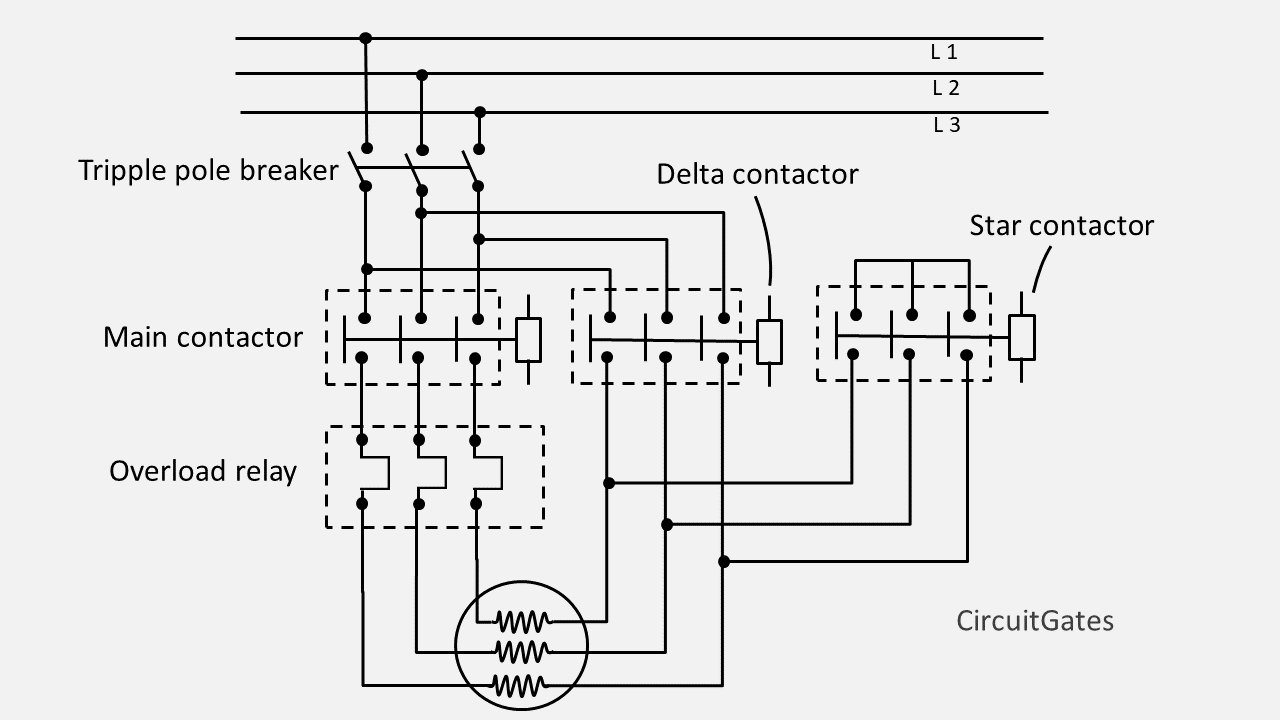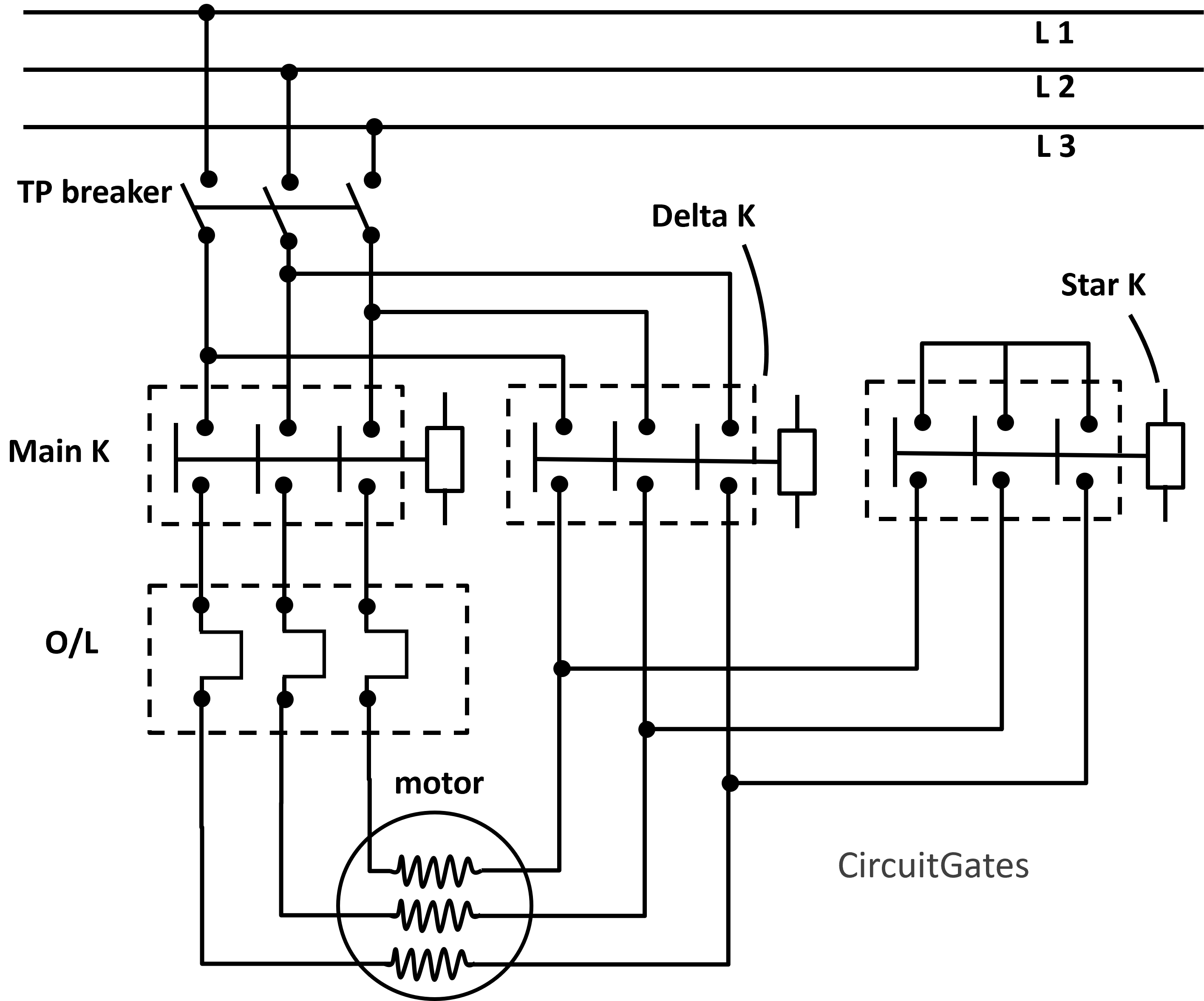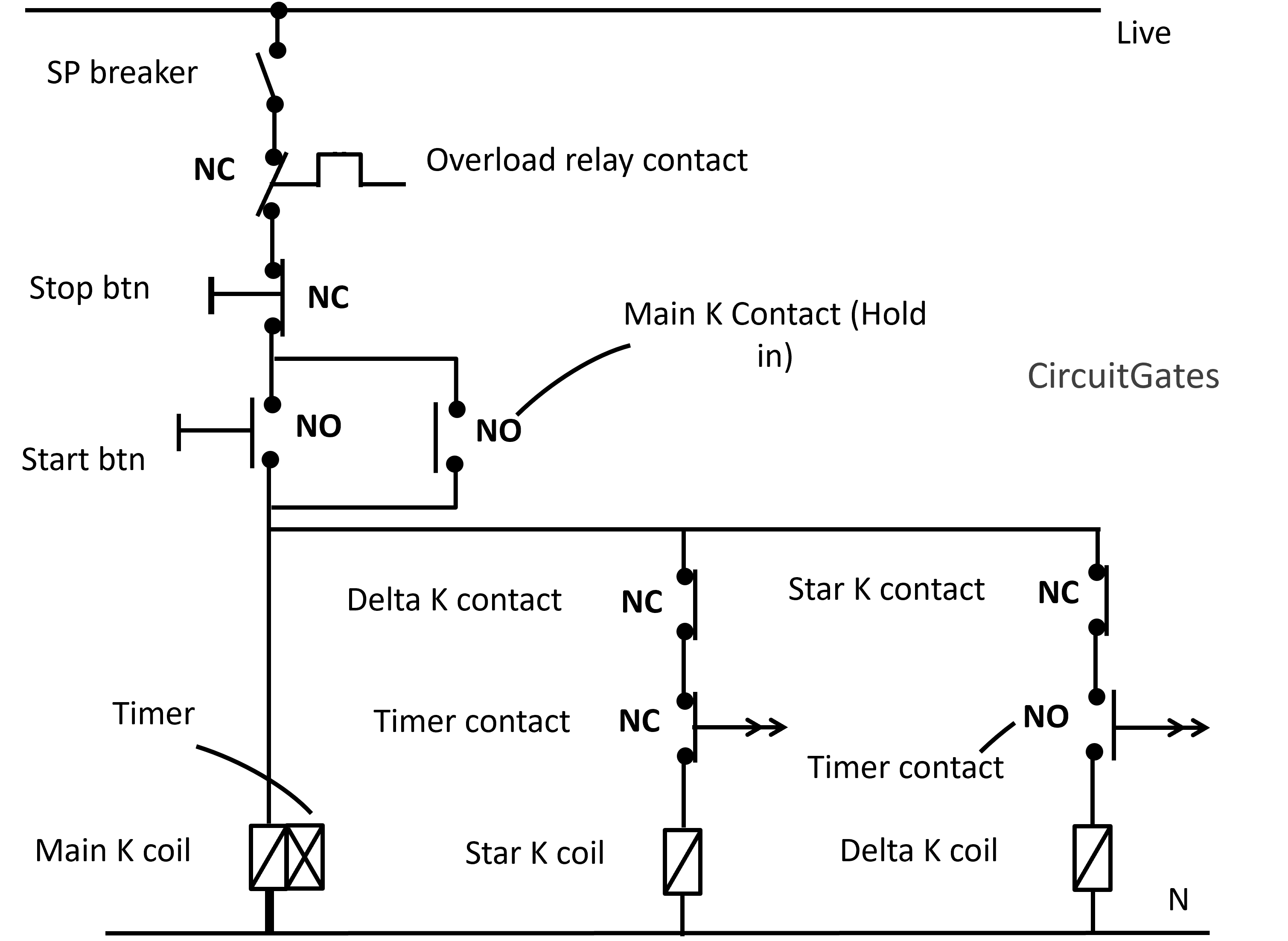How does a Star-delta starter work?

A Star-delta starter is a method for starting larger induction electric motors, typically those rated 4kW and above.
In star-delta starting, the electric motor first runs in star and is then switched to delta after reaching 80% of its full load speed.
The star-delta starter consists of two circuits: the power and control circuits. The power circuit provides power to the electric motor and the control circuit controls the operations of the electric motor.
Power Circuit.

Control Circuit.

- TP Breaker - Tripple pole breaker
- SP Breaker - Single pole breaker
- K - Contactor
- btn - Button
- NC - Normally closed
- N - Neutral
- O/L - Overload relay
- NO - Normally open
Key
Components of a star-delta starter
A Star-Delta Starter consists of:
1 .Start button - a normally open contact button that is pressed for the electric motor to run.
2 .Stop button - a normally closed contact button that is pressed to stop the electric motor.
3 .Circuit breakers - are either manually operated to switch off the circuit for maintenance or they automatically trip, breaking the circuit in event of a fault.
4 .Overload relay - overload relay breaks or switches off the circuit in event of overload that causes overheating of the electric motor windings.
Overload is a condition in which current flowing in a circuit exceeds the amount required, leading to overheating of the electric motor windings which result in burning of the electric motor. Some overloads may not cause tripping of circuit breakers, so there is a need of an overload relay.
5 .Contactors (Main, delta and star) - A contactor is a device that when current flows through its coil, closes the contacts of power circuit for electric motor to run and vice versa.
6.Timer - anables the electric motor to switch from star to delta.
7.Electric motor - is a device that converts electrical energy into mechanical energy.
How does a Star-Delta starter work?
On a star-delta starter, assuming the circuit breakers are in the ON position, when the start button is pressed, current is allowed to flow through the main contactor and star contactor coils.
When current flows through the coils, the power contacts of the contactors are pulled to close and power reach the electric motor and the motor begins to run in star.
After a preset time has reached, the timer opens the star contact and closes the delta contact.
This stops current from flowing through the coil of star contactor and enables current to flow through the delta contactor coil, thus opening the power contacts of star contactor and closing the power contacts of the delta contactor and the electric motor is switched to delta.
The main contactor contact labeled "hold in" that is in parallel with the start button serves as a hold-in contact. This contact is a normally open contact, it is put in close position when main contactor coil is energized.
Since the start button is a normally open contact, soon after pressing it, it retains to its normal open position, current will then continue to flow to the energized contactor coils through the hold in contact.
To stop the electric motor, the stop button is pressed, this stops current from flowing through energized contactor coils, causing contactor power contacts to open and the electric motor to stop running.
Why Large Electric Motors are Connected to a Star-Delta Starter
Let's look at star and delta configurations. A star configuration has higher resistance than a delta configuration.
When an electric motor is running, a back electromotive force (e.m.f) is produced in its windings, opposing current flow.
However, when starting, there's no back e.m.f, so the current depends on the configuration used.
If a large electric motor is started in a delta configuration (which has low resistance), too much current will flow, potentially damaging the motor. Hence, starting in a star configuration is necessary.
On the other hand, running a large electric motor in a star configuration (which has high resistance) would reduce the current due to the additional resistance from the back e.m.f. Therefore, a delta configuration is needed for running.
This is why large electric motors are started in star and then switched to delta to run.
Advantages and Disadvantages of a Star Delta starter.
Advantages.
The starting current of larger electric motors is greatly reduced
If properly installed, the response time to fault and operations is very short.
It offers protection to electric motors by automatic switching off the electric motor in event of fault.
It provides a safe invironment to people working with the electric motor.
Disadvantages.
It is a complex circuit, difficult to understand, and to install.
It needs more components than other starting methods, making it a more expensive method.
Difficult to trace a fault.
If you have made it this far, thanks for reading. Please consider subscribing to our YouTube channel for more electrical tutorials.